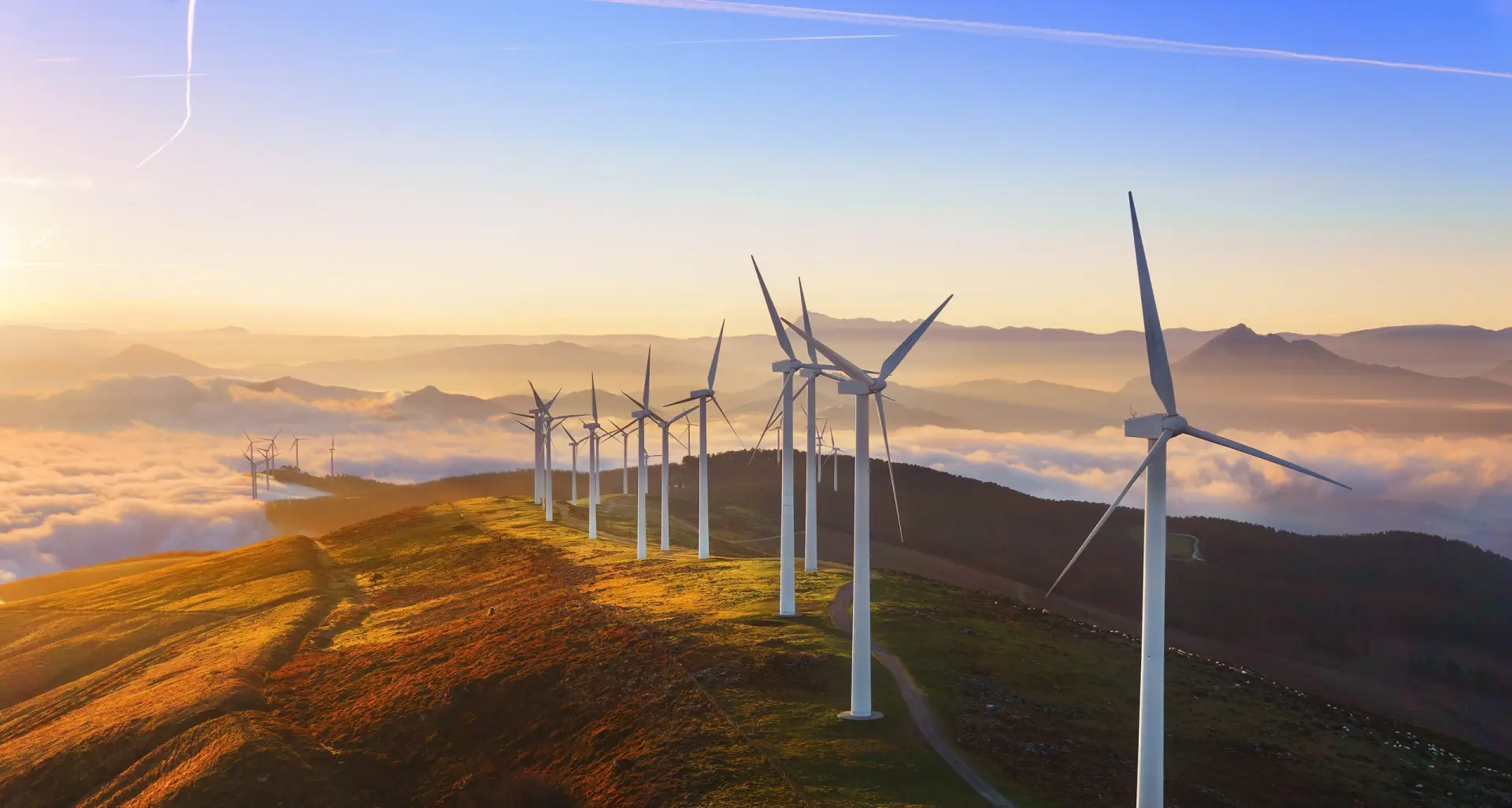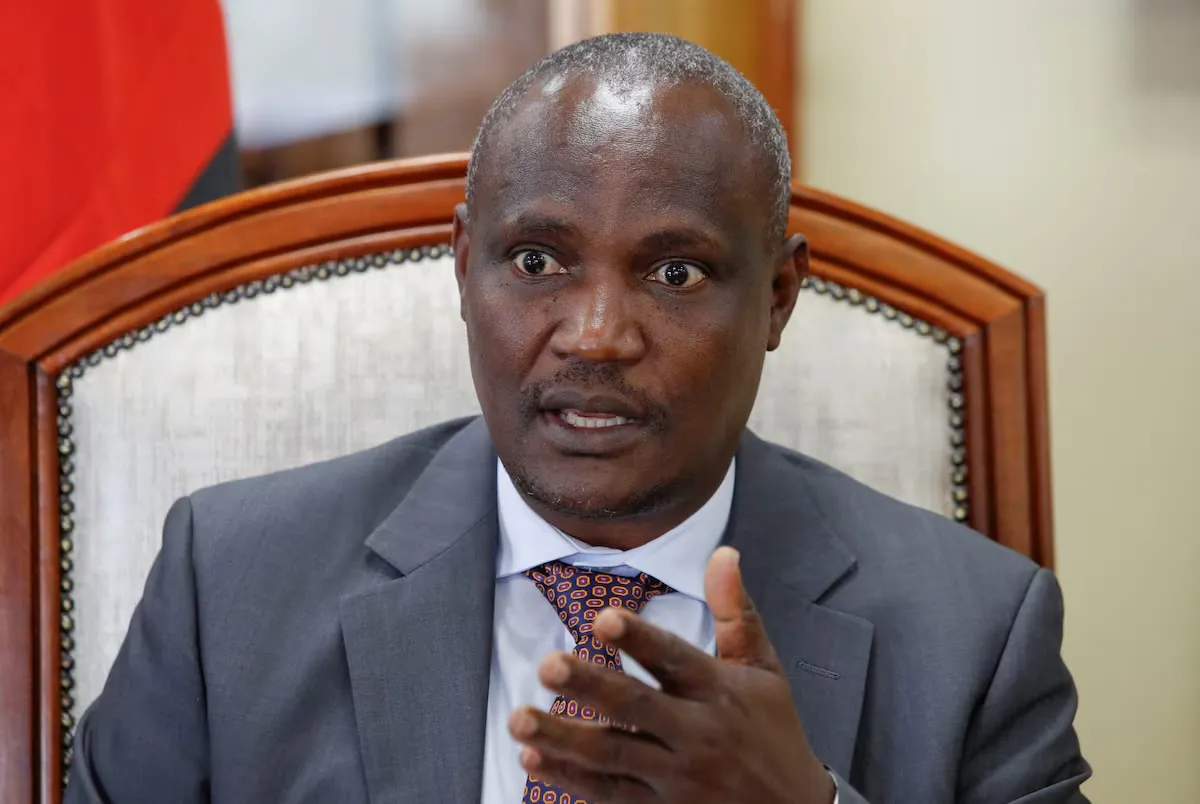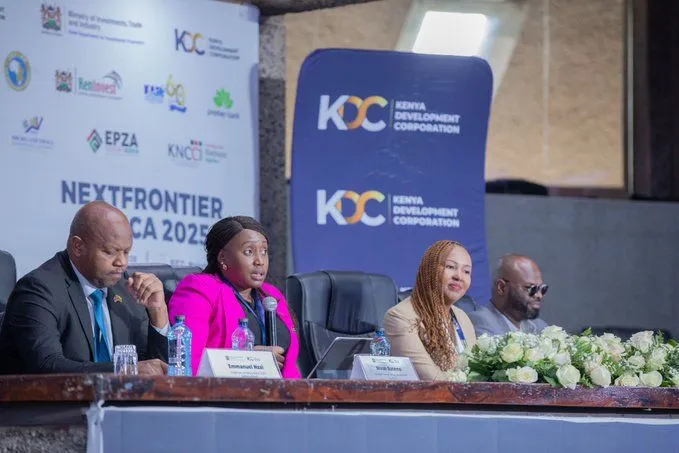In a bold move towards energy independence and environmental sustainability, Kenya is ramping up efforts to transition to a 100% renewable energy mix by 2030. With investor backing and robust government support, the nation is steadily reducing its reliance on imported power, paving the way for a clean, affordable, and reliable energy future. The renewed focus on green energy comes as Kenya already generates over 70 percent of its power from renewable sources such as geothermal, hydro, and wind energy, while the solar energy sector is rapidly emerging as an attractive option for both industrial and residential consumers.
A Vision for a Green Energy Future
Energy and Petroleum Cabinet Secretary Opiyo Wandayi, during his inaugural visit to the Lake Turkana Wind Power (LTWP) project, emphasized that the Kenyan government is fully committed to creating an enabling environment for investors in the burgeoning green energy subsector. “We are fully committed to providing an enabling environment to investors in the nascent green energy sub-sector as a way of affording the citizenry clean, affordable, reliable, and efficient energy. This, in our view, is a steady pathway to a nationwide transition to green energy,” Wandayi stated.
The government’s strategy is not merely about reducing imported power; it is about harnessing Kenya’s abundant natural resources to foster economic growth, ensure energy security, and build a sustainable future for its citizens. The ambitious goal of achieving full renewable energy by 2030 is supported by a series of policy reforms, public-private partnerships, and strategic investments aimed at diversifying the nation’s energy portfolio.
The Role of Investor Confidence
Investor backing plays a crucial role in Kenya’s renewable energy revolution. Recognizing the potential of the green energy subsector, both domestic and international investors are increasingly showing interest in projects that promise long-term returns while contributing to the nation’s sustainability goals. The government’s initiative to revisit the 2023 moratorium on Power Purchase Agreements (PPA) is a clear signal to investors that the regulatory landscape is becoming more conducive to renewable energy investments.
The PPA freeze, initially implemented to reassess Kenya’s energy procurement strategy, had raised concerns among investors about market stability. However, Cabinet Secretary Wandayi’s petition to the National Assembly to lift this moratorium is expected to restore investor confidence, paving the way for a more dynamic investment climate in the renewable energy sector. With clearer guidelines and improved policy frameworks, investors can more confidently commit capital to projects that align with Kenya’s ambitious energy goals.
Expanding the Renewable Energy Mix
Harnessing Kenya’s Natural Endowments
Kenya’s diverse geography offers a unique advantage in harnessing various renewable energy sources. The country’s geothermal resources, largely concentrated in the Rift Valley, have been a cornerstone of its renewable energy supply, providing a steady and reliable source of power. Kenya is considered one of the world’s leading geothermal producers, and the government continues to explore additional sites to further expand this capacity.
Hydropower remains another critical component of Kenya’s energy mix. With several large dams and river systems across the country, hydropower has historically provided a substantial portion of the nation’s electricity. The government is now focused on modernizing existing facilities to improve efficiency and reduce environmental impacts while also exploring opportunities for small-scale hydropower projects in remote areas.
Wind energy, too, is on the rise, with the Lake Turkana Wind Power project standing as a flagship example. LTWP, which supplies 12 percent of Kenya’s electricity, has been pivotal in demonstrating the viability of wind power on a large scale. Since commencing operations in 2018, the wind farm has delivered an impressive 9.5 billion kilowatt-hours (kWh) of clean energy to the national grid, with an average capacity factor of 54.7 percent—one of the highest in the world.
The Solar Surge
Perhaps one of the most exciting developments in Kenya’s renewable energy landscape is the rapid expansion of the solar energy sector. With falling costs of photovoltaic (PV) technology and increasing efficiency rates, solar power is becoming a favorite among both industrial players and homeowners. Solar installations, whether on rooftops or as part of large-scale solar farms, are set to play an increasingly important role in meeting the nation’s energy demands.
Government incentives, such as tax breaks and feed-in tariffs, have further bolstered the attractiveness of solar investments. In rural areas, off-grid solar solutions are already making a significant impact by providing reliable power to communities that have long been isolated from the main grid. These initiatives not only improve quality of life but also stimulate local economies by powering small businesses and educational institutions.
The Lake Turkana Wind Power Project: A Model of Success
At the heart of Kenya’s renewable energy transformation lies the Lake Turkana Wind Power project. As the country’s largest wind farm, LTWP has become a symbol of Kenya’s commitment to green energy. The project’s success is evident not only in its impressive contribution to the national grid but also in its positive socio-economic impact on the local community.
LTWP’s Chief Executive Officer, Max Schiff, highlighted the project’s focus on community engagement and local empowerment. “We give preference to locals whenever a vacancy arises. This ensures that we cultivate a symbiotic working relationship besides addressing the soaring cases of unemployment in the region,” Schiff remarked. The wind farm’s commitment to local hiring has resulted in significant employment opportunities, with 80 percent of its workforce hailing from the surrounding communities.
Moreover, LTWP has invested over KSh840 million in Corporate Social Investment projects, focusing on key areas such as education, water, and healthcare. These investments have made a tangible difference in Marsabit County, improving the overall quality of life and fostering a sense of pride among residents. Such community-focused initiatives underscore the fact that Kenya’s renewable energy journey is not solely about power generation—it is also about uplifting people and communities.
Policy Reforms and the Road to 2030
Lifting the Moratorium on Power Purchase Agreements
One of the critical policy reforms currently under consideration is the lifting of the 2023 moratorium on Power Purchase Agreements. PPAs are essential for providing the financial stability needed to attract long-term investments in renewable energy projects. The temporary freeze on these agreements, although well-intentioned, created uncertainty in the market and deterred potential investors.
Cabinet Secretary Wandayi’s proactive approach in petitioning the National Assembly to reconsider this moratorium is seen as a major step towards restoring investor confidence. The proposed policy changes are expected to facilitate smoother negotiations between power producers and the government, thereby accelerating the deployment of renewable energy projects across the nation.
Enabling a Conducive Regulatory Environment
In tandem with lifting the PPA moratorium, the Kenyan government is actively working to create a more favorable regulatory environment for renewable energy investments. This includes streamlining licensing procedures, reducing bureaucratic red tape, and ensuring transparency in the allocation of resources. By addressing these challenges head-on, Kenya aims to position itself as a prime destination for renewable energy investments in Africa.
International development partners and financial institutions have taken note of these efforts. With support from organizations such as the African Development Bank, the World Bank Group, and various regional investment funds, Kenya is receiving both technical and financial assistance to modernize its energy infrastructure. This collaborative approach is expected to bolster the country’s renewable energy capacity and create a more resilient and efficient power sector.
Economic and Social Impacts of the Renewable Energy Transition
Reducing Dependency on Imported Power
A key motivation behind Kenya’s drive towards full renewable energy is the desire to reduce overreliance on imported power. Historically, the country has faced challenges related to power shortages and high energy costs due to its dependency on external sources. By leveraging its natural resources to generate clean energy, Kenya is not only ensuring energy security but also reducing the financial burden associated with energy imports.
The economic benefits of this shift are manifold. With increased energy independence, the nation can allocate resources that would otherwise be spent on purchasing foreign energy, toward local development initiatives. Moreover, the expansion of renewable energy projects is expected to create numerous job opportunities, from construction and engineering to operations and maintenance, further stimulating economic growth and reducing unemployment.
Empowering Local Communities and Driving Social Change
The renewable energy transition in Kenya is as much about social empowerment as it is about environmental sustainability. Reliable access to clean energy has the potential to transform communities by improving access to education, healthcare, and economic opportunities. For example, in rural areas where the grid is unreliable or non-existent, renewable energy solutions such as solar mini-grids and off-grid systems are proving to be game-changers.
These initiatives enable small businesses to operate more efficiently, allow students to study after dark, and ensure that essential services like hospitals and clinics can function without interruption. The positive social impacts of these projects are already evident in several pilot areas, where communities have reported significant improvements in quality of life. This human-centered approach to energy development underscores the broader vision of Kenya’s renewable energy strategy—one that prioritizes the well-being of its citizens and fosters inclusive growth.
Creating a Ripple Effect Across the Region
Kenya’s ambitious renewable energy agenda is expected to have a ripple effect across East Africa and the broader continent. As one of the pioneers in clean energy in Africa, Kenya’s success serves as a model for neighboring countries grappling with similar challenges. The country’s experience in harnessing geothermal, hydropower, wind, and solar energy can offer valuable lessons for other nations seeking to diversify their energy mix and reduce dependency on fossil fuels.
Regional collaborations are already underway, with initiatives aimed at integrating power grids across borders to facilitate the efficient distribution of renewable energy. Such collaborations not only enhance energy security for all involved countries but also pave the way for a more interconnected and resilient African power sector. In this context, Kenya’s journey towards full renewable energy is not just a national effort—it is a beacon of hope for the entire continent.
Technological Innovations and Future Prospects
Embracing Smart Grid Technologies
As Kenya progresses towards a full renewable energy transition, the integration of smart grid technologies is set to play a pivotal role. Smart grids leverage digital communication and automation to manage electricity demand more efficiently and ensure the optimal distribution of power. These technologies enable real-time monitoring and control of energy flows, reducing waste and improving reliability.
By investing in smart grid infrastructure, Kenya can better manage the variable output of renewable energy sources, such as solar and wind. This not only stabilizes the power supply but also enhances the overall efficiency of the grid. With the support of international technology partners, the nation is poised to become a leader in the application of cutting-edge energy management systems in Africa.
Energy Storage Solutions: Overcoming Intermittency Challenges
One of the challenges inherent in renewable energy is the intermittency of power generation—sunlight and wind do not always blow at consistent levels. To address this, energy storage solutions are increasingly being deployed to store excess power generated during peak production periods and release it when demand is high. Advanced battery systems, along with emerging technologies like pumped hydro storage and thermal storage, are transforming the renewable energy landscape.
Kenya is actively exploring these storage solutions to complement its renewable energy projects. By ensuring that energy is available even during periods of low generation, these innovations will be critical in maintaining a stable and reliable power supply. The combination of renewable generation, smart grids, and energy storage is expected to create a resilient energy ecosystem that can adapt to the fluctuating demands of modern society.
Humanizing the Transition: Stories from the Ground
The Impact on Local Livelihoods
At the heart of Kenya’s renewable energy transition are the people whose lives are being transformed by these initiatives. In Marsabit County, for example, the success of the Lake Turkana Wind Power project has had a profound impact on local communities. With 80 percent of its workforce recruited from the surrounding area, LTWP has become a cornerstone of community development, providing not only employment but also essential social services through its corporate social investment programs.
Residents in the region have witnessed firsthand the positive changes brought about by access to reliable, clean energy. Schools can operate more efficiently, health clinics have improved facilities, and local businesses are thriving. These stories are a testament to the transformative power of renewable energy—when implemented with a focus on community empowerment, the benefits extend far beyond the balance sheet.
Fostering a Culture of Innovation and Sustainability
Kenya’s renewable energy revolution is also inspiring a new generation of entrepreneurs and innovators. Universities and technical institutions across the country are increasingly focusing on renewable energy technologies, equipping young professionals with the skills needed to drive the industry forward. From research in geothermal exploration to advancements in solar panel efficiency, the nation’s academic and private sectors are collaborating to foster a culture of sustainability and innovation.
This cultural shift is not only improving technical expertise but is also nurturing a sense of environmental stewardship among citizens. As more young Kenyans enter the renewable energy field, they bring fresh ideas and a commitment to creating a sustainable future—a future where economic progress and environmental conservation go hand in hand.
Conclusion: A Brighter, Greener Future for Kenya
Kenya’s journey towards a full renewable energy shift, backed by robust investor confidence and progressive government policies, marks a pivotal moment in the nation’s history. With over 70 percent of its current energy mix already derived from renewables, and with ambitious plans to expand further through solar, wind, geothermal, and hydropower projects, Kenya is well on its way to achieving energy independence by 2030.
The transformative initiatives—ranging from lifting regulatory barriers like the Power Purchase Agreement moratorium to investing in advanced grid and storage technologies—are designed to create a resilient and sustainable energy ecosystem. These efforts not only reduce the country’s dependency on imported power but also stimulate economic growth, create jobs, and enhance the quality of life for millions of Kenyans.
At the core of this transition is a human-centered approach. From empowering local communities around major projects like the Lake Turkana Wind Power plant to fostering innovation in renewable energy technologies, Kenya’s energy revolution is fundamentally about people. It is about ensuring that the benefits of clean, affordable, and reliable energy reach every corner of the nation—from bustling urban centers to the most remote rural areas.
As Kenya continues to unlock its renewable potential, its experience is poised to serve as a model for the rest of Africa and beyond. The collaborative efforts between government, investors, and local communities illustrate that a sustainable future is within reach when the right policies and partnerships are in place.
Looking forward, the promise of a fully renewable energy future for Kenya is not just a lofty ideal—it is an achievable goal that is already bearing fruit. With strategic investments, innovative technology, and a relentless focus on community empowerment, Kenya is charting a course towards a greener, more prosperous future. This transformation is a powerful reminder that when nations commit to sustainable development, the rewards are measured not only in kilowatt-hours and economic indicators but also in improved lives and a healthier planet.
In an era defined by the dual challenges of climate change and energy insecurity, Kenya’s renewable energy shift represents a beacon of hope. It demonstrates that with vision, determination, and collaborative effort, even the most ambitious goals can be realized. As the nation marches towards 2030 with investor backing and public support, its journey will undoubtedly inspire others around the world to embrace the clean energy revolution and build a brighter, greener future for all.
Ready to take your career to the next level? Join our dynamic courses: ACCA, HESI A2, ATI TEAS 7 , HESI EXIT , NCLEX – RN and NCLEX – PN, Financial Literacy!🌟 Dive into a world of opportunities and empower yourself for success. Explore more at Serrari Ed and start your exciting journey today! ✨
photo source: Google
By: Montel Kamau
Serrari Financial Analyst
2nd April, 2025
Article, Financial and News Disclaimer
The Value of a Financial Advisor
While this article offers valuable insights, it is essential to recognize that personal finance can be highly complex and unique to each individual. A financial advisor provides professional expertise and personalized guidance to help you make well-informed decisions tailored to your specific circumstances and goals.
Beyond offering knowledge, a financial advisor serves as a trusted partner to help you stay disciplined, avoid common pitfalls, and remain focused on your long-term objectives. Their perspective and experience can complement your own efforts, enhancing your financial well-being and ensuring a more confident approach to managing your finances.
Disclaimer: This article is for informational purposes only and does not constitute financial advice. Readers are encouraged to consult a licensed financial advisor to obtain guidance specific to their financial situation.
Article and News Disclaimer
The information provided on www.serrarigroup.com is for general informational purposes only. While we strive to keep the information up to date and accurate, we make no representations or warranties of any kind, express or implied, about the completeness, accuracy, reliability, suitability, or availability with respect to the website or the information, products, services, or related graphics contained on the website for any purpose. Any reliance you place on such information is therefore strictly at your own risk.
www.serrarigroup.com is not responsible for any errors or omissions, or for the results obtained from the use of this information. All information on the website is provided on an as-is basis, with no guarantee of completeness, accuracy, timeliness, or of the results obtained from the use of this information, and without warranty of any kind, express or implied, including but not limited to warranties of performance, merchantability, and fitness for a particular purpose.
In no event will www.serrarigroup.com be liable to you or anyone else for any decision made or action taken in reliance on the information provided on the website or for any consequential, special, or similar damages, even if advised of the possibility of such damages.
The articles, news, and information presented on www.serrarigroup.com reflect the opinions of the respective authors and contributors and do not necessarily represent the views of the website or its management. Any views or opinions expressed are solely those of the individual authors and do not represent the website's views or opinions as a whole.
The content on www.serrarigroup.com may include links to external websites, which are provided for convenience and informational purposes only. We have no control over the nature, content, and availability of those sites. The inclusion of any links does not necessarily imply a recommendation or endorsement of the views expressed within them.
Every effort is made to keep the website up and running smoothly. However, www.serrarigroup.com takes no responsibility for, and will not be liable for, the website being temporarily unavailable due to technical issues beyond our control.
Please note that laws, regulations, and information can change rapidly, and we advise you to conduct further research and seek professional advice when necessary.
By using www.serrarigroup.com, you agree to this disclaimer and its terms. If you do not agree with this disclaimer, please do not use the website.
www.serrarigroup.com, reserves the right to update, modify, or remove any part of this disclaimer without prior notice. It is your responsibility to review this disclaimer periodically for changes.
Serrari Group 2025





